Physical Address
304 North Cardinal St.
Dorchester Center, MA 02124
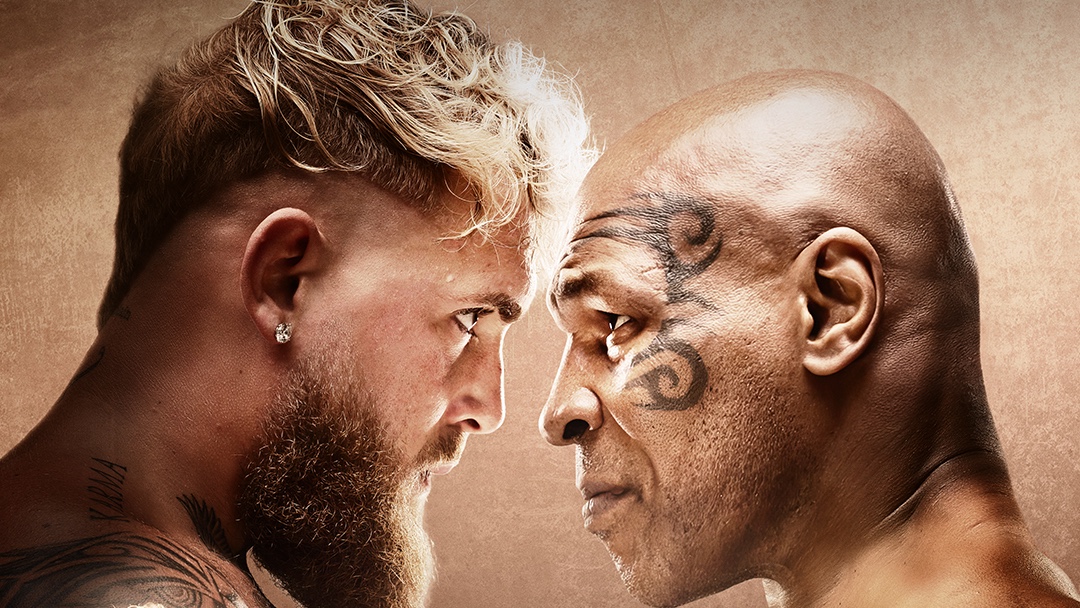
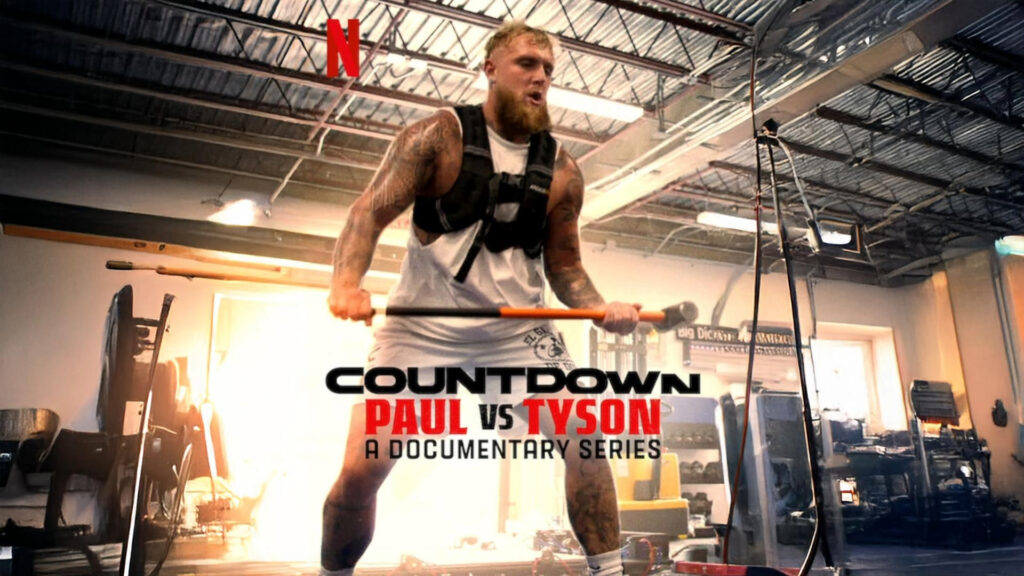
In an era where spectacle often overshadows substance, Countdown: Paul vs. Tyson on Netflix isn’t just a boxing event—it’s a brilliant comedy disguised as a fight. This “match” between Mike Tyson and Jake Paul is less about genuine athleticism and more about entertainment value, with all the elements of a WWE storyline dressed up in boxing gloves.
If you’re expecting a hard-fought contest, this probably isn’t the show for you. But for those who understand the secret—that this is a choreographed, well-rehearsed performance—it becomes a hilariously engaging experience.
The spectacle centers on Tyson and Paul, two names that transcend boxing, each bringing their own flair for theatrics and showmanship. While Tyson’s boxing legacy is undeniable, and Paul’s social media savvy has drawn a new generation to the sport, this event isn’t about competition; it’s about putting on a show.
For those in the know, Countdown: Paul vs. Tyson offers all the elements of a comedic play with just enough staged intensity to keep you laughing and entertained. If you can sit back, relax, and appreciate this as a glorified reality show rather than a genuine athletic showdown, you’re in for a truly amusing experience—and a glimpse into the evolving role of boxing as pure entertainment.
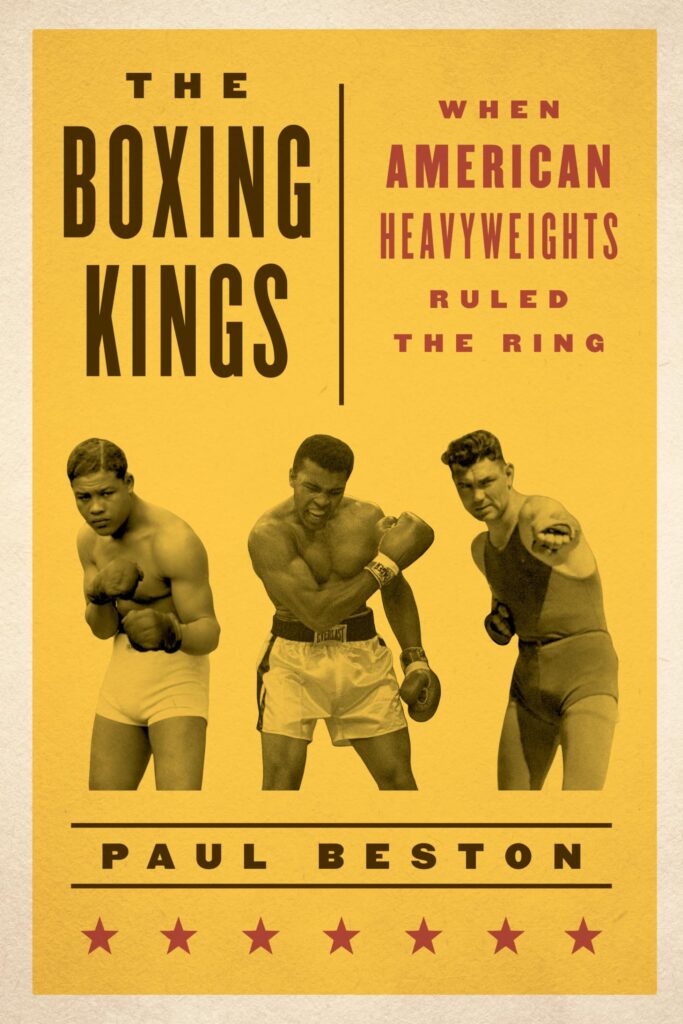
In The Boxing Kings: When American Heavyweights Ruled the Ring, Paul Beston lays out a fascinating history of former heavyweight champions who, beyond their primes, engaged in unusual and often extravagant performances to keep the money flowing.
Beston’s account of this phenomenon highlights a pattern among the greatest American boxers, who, for various reasons, found themselves extending their public careers in unconventional ways. Sometimes driven by financial hardships and sometimes by the desire to stay in the spotlight, these champions found themselves participating in what many would call “glorified circus matches.”
• John L. Sullivan: The great John L. Sullivan, one of the earliest heavyweight champions, set the tone for this legacy. After his boxing career, Sullivan found new ways to keep the money coming in by performing in vaudeville shows and theater productions. His fame drew crowds, and in turn, he capitalized on his popularity to sustain himself.
• Jack Johnson: Johnson, a trailblazer both inside and outside the ring, continued to chase the spotlight long after his championship days. He entered numerous exhibition matches and even dabbled in acting, taking on roles in films and stage performances. For Johnson, this was about both financial survival and a chance to maintain his cultural impact.
• Joe Louis: Joe Louis’s post-boxing journey paints a vivid picture of the economic struggles even legendary champions faced. Facing significant tax debts, Louis returned to the ring to try and clear his financial woes. Later, he ventured into professional wrestling and other public appearances. For Louis, these ventures were a lifeline, but they were a stark contrast to his previous championship days.
• Jack Dempsey: Jack Dempsey extended his presence beyond the ring in a more entrepreneurial direction, opening a restaurant in New York City that bore his name. Even so, he stayed engaged in boxing through exhibitions, which kept his fame alive and gave fans a chance to see him in action long after he stepped away from competitive fights.
• Muhammad Ali: Ali’s return to the ring in the early 1980s stands as one of the most controversial examples. Fighting against Larry Holmes and Trevor Berbick, these late-career bouts were widely criticized as unnecessary and harmful to his health. Yet, Ali’s need to return, both financially and for the love of the crowd, mirrors the same drive seen in his predecessors.
• Mike Tyson: Tyson himself has walked this path multiple times. Even after his glory days in the 80s and 90s, he participated in exhibitions, including a 2020 match with Roy Jones Jr. For Tyson, these events offer both a financial boost and a chance to stay connected with his public persona, reflecting the same pull that once drew Sullivan, Johnson, and others back to the stage.
Beston’s overview shows that these champions were united not just by their titles but by their willingness to embrace the “freak show” aspect of boxing long after their peak years. For many, it was about survival and legacy—a need to extend their relevance in whatever way possible, even if it meant participating in matches that were more entertainment than sport.
Tyson’s own financial journey makes it clear why he might feel drawn to events like Countdown: Paul vs. Tyson. His career has been one of dramatic highs and painful lows, with periods of immense wealth followed by times of financial hardship. Here’s a breakdown of his net worth over the years:
• 1985–1990: Tyson’s early career was nothing short of meteoric. As the youngest heavyweight champion in 1986, he quickly accumulated wealth, with his net worth reaching an estimated $50 million by 1990. Tyson was not only a champion but also a cultural icon, with endorsement deals and fight purses that made him one of the highest-paid athletes.
• 1991–1995: Legal troubles hit Tyson hard, with a conviction in 1992 that resulted in a six-year prison sentence, though he served three. Surprisingly, he was able to retain some financial stability, reportedly increasing his net worth to $400 million after his release due to lucrative deals that awaited him.
• 1996–2003: The 90s comeback years saw Tyson in some of the biggest fights of his career, including two matches with Evander Holyfield. Despite career earnings of over $300 million, Tyson’s financial decisions, combined with lavish spending, led to bankruptcy in 2003. At that point, he reportedly owed $23 million in debts.
• 2004–2010: Tyson’s retirement didn’t mark an end to his financial troubles. By 2010, he publicly admitted to being “totally destitute and broke.” Yet he began to rebuild through media appearances, including a popular cameo in The Hangover, which introduced him to a new generation of fans.
• 2011–2017: Tyson diversified, investing in the cannabis business with “Tyson Ranch” and launching his animated series, Mike Tyson Mysteries. These ventures, along with his candidness about his life, helped him recover financially.
• 2018–2024: Tyson’s recent net worth is estimated at $10 million. His cannabis business, popular podcast Hotboxin’ with Mike Tyson, and a 2020 exhibition match have been the primary sources of his income.
A Big Payday—And a New Kind of Show
As of today, Tyson’s estimated net worth of $10 million is certainly more than most could dream of. However, for someone with Tyson’s history and lifestyle, it might not feel like enough. Additionally, Tyson appears less interested in a sustained, long-term project like a podcast or a business venture that requires his day-to-day involvement. Instead, he has his eyes on the kind of high-stakes, high-reward opportunity that a single boxing event can bring. Reportedly, he’s poised to earn upwards of $40 million for this match with Jake Paul—a payday that any rational person, especially someone with Tyson’s background, would find hard to turn down.
This isn’t the kind of event that’s intended to be taken seriously as a boxing match. Instead, there are strong reasons to believe it’s an orchestrated, predetermined show—a spectacle designed to entertain rather than to prove Tyson’s prowess. The only difference between this and a WWE match is that Tyson and Paul need to sell their punches a bit more realistically. But at its core, Countdown: Paul vs. Tyson is a high-budget, big payday reality show. Tyson’s legacy as a boxer may have ended years ago, but his role as an entertainer is alive and well.
This match fits seamlessly into the lineage of spectacles that Beston laid out in The Boxing Kings. Tyson, like so many champions before him, is stepping into the ring for one more grand show. And as long as we view it for what it is—a glorified reality show with a massive payout—this fight has every chance to be wildly entertaining.
Evidence of Friendship and Possible Collaboration: Tyson and Paul’s Growing Connection
There is strong evidence that Mike Tyson and Jake Paul share a genuine friendship, with mutual respect and shared interests in both boxing and the world of entertainment. Their relationship has developed over the past few years, marked by public displays of camaraderie and a shared goal to bring fresh attention to boxing. Given their bond, there is reason to believe they could be collaborating to put on the best show possible without causing each other serious harm.
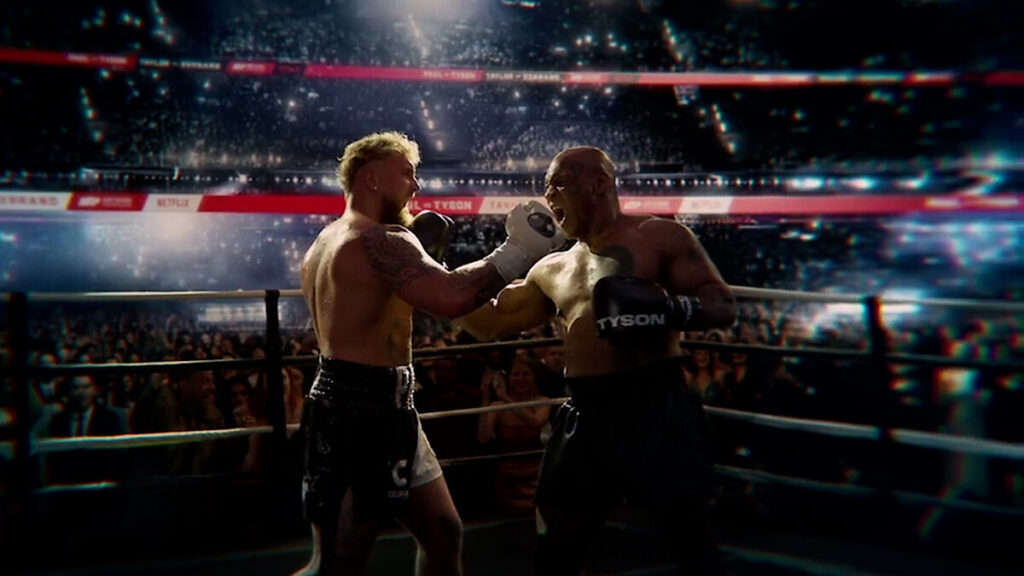
The roots of Tyson and Paul’s friendship go back to 2020, when Jake Paul fought on the undercard of Tyson’s highly publicized exhibition match against Roy Jones Jr. This marked Paul’s second professional fight, where he achieved a knockout victory over former NBA star Nate Robinson. Tyson was openly impressed by Paul’s performance, which he saw as a breath of fresh air for boxing. Tyson praised Paul’s ability to bring new, younger fans to the sport, acknowledging that his unorthodox approach and massive social media presence could be a boon for boxing.
Tyson’s support went beyond just casual compliments. By publicly recognizing Paul’s potential, he essentially endorsed him as a valuable addition to the boxing world. This endorsement from a boxing icon helped validate Paul’s efforts to carve out his own path in the sport. Their connection wasn’t merely professional; it marked the beginning of a relationship founded on mutual admiration.
Public Interactions and Continued Praise
After the 2020 match, Tyson and Paul continued to engage publicly, often praising each other’s efforts and contributions to boxing. Tyson has repeatedly commended Paul for his dedication to training and his strategic approach to drawing attention to the sport. Tyson seems to view Paul’s entry into boxing as a way to modernize and expand its audience, and he respects Paul’s drive and commitment to taking the sport seriously.
For his part, Paul has spoken with deep respect about Tyson’s legacy. He has expressed admiration for Tyson’s achievements and impact on the boxing world, emphasizing how much Tyson’s story and career inspire him. This back-and-forth respect solidified a bond that transcended the usual formalities between fighters, hinting at a friendship where they genuinely respect each other’s contributions.
The Potential Fight: Friendly Banter or Real Plans?
By 2022, talk of an exhibition match between Tyson and Paul began to gain traction. Tyson himself mentioned this possibility on Jimmy Kimmel Live, noting that a match with Paul could be exciting and entertaining. He even acknowledged Paul’s skill level and suggested that such a bout would draw massive public interest. Tyson’s comments implied that, despite the large age gap, he saw Paul as a viable and entertaining opponent—a notion that would likely surprise many traditional boxing fans.
This mention of a fight seemed more like friendly banter, with Tyson expressing genuine interest in the idea. The tone of these discussions was more about the entertainment factor and shared respect than a competitive rivalry, leading fans to wonder if the two might be inclined to take a more theatrical approach if they ever shared the ring.
Their friendly relationship and years of public camaraderie are finally culminating in a scheduled fight on November 15, 2024, at AT&T Stadium in Arlington, Texas. The fight has generated widespread interest, with fans eagerly anticipating the showdown between Tyson, a heavyweight icon, and Paul, a young, controversial figure who has managed to bring his own brand of showmanship to boxing.
Given the history between them, it’s not a stretch to imagine that Tyson and Paul may have a shared understanding as they step into the ring. Both have emphasized their commitment to delivering a “competitive” and “entertaining” match, yet their friendly relationship suggests that this commitment could focus more on theatrics and spectacle than a genuine desire to go all out against each other. Their shared goal seems to be delivering a memorable event for fans rather than engaging in a brutal contest.
While the documented interactions provide insight into Tyson and Paul’s friendship, they don’t capture the full scope of their relationship. It’s entirely possible that behind the scenes, Tyson and Paul could be coordinating strategies for how they want to conduct the fight. Private conversations, unseen by the public, could allow them to set boundaries or discuss choreography that would help them put on an exciting yet controlled performance.
With Tyson’s decades of experience and Paul’s flair for showmanship, the two might be working together to design a fight that avoids serious harm while still thrilling audiences. Whether through mutual agreement or an unspoken understanding, it’s likely that both fighters want to avoid significant injury and instead aim to create a memorable spectacle that entertains rather than threatens each other’s health.
In summary, the bond between Tyson and Paul appears to be one of genuine friendship, with shared respect and understanding that allows them to blur the line between sportsmanship and showmanship. Their relationship has evolved from mutual admiration to a professional engagement in the ring.
While we can’t know all of their private discussions, the friendship documented over the years suggests they might be collaborating to deliver the best possible show for fans, all while protecting each other. In this way, the upcoming match could be a carefully curated spectacle that entertains without pushing either fighter to dangerous extremes, placing it squarely in the lineage of heavyweight spectacles that prioritize entertainment over competition.
It would be naïve to think that the organizers of the Tyson vs. Paul event, including Tyson’s and Paul’s camps and the executives at Netflix, aren’t taking extensive safety measures to protect Tyson. Boxing at Tyson’s age carries substantial risks, and any significant injury would be disastrous—not only for Tyson’s health but also for Netflix’s reputation. As the streaming giant attempts to expand its portfolio into live events, the potential fallout from an injury to Tyson could derail those ambitions and cast a shadow over future projects.
In light of these risks, there’s every reason to believe that the event will feature behind-the-scenes guardrails to ensure that Tyson remains safe. This approach means viewers should expect a controlled, choreographed performance rather than a genuinely competitive bout. So, how do you maintain the illusion of a real fight while minimizing the risks? You orchestrate the performance.
In a setting like this, Tyson and Paul could easily arrange an agreed-upon performance. Picture this: each fighter knows what the other is going to do well in advance, allowing them to sell the fight without endangering each other. If Tyson is about to throw a left hook, he might whisper a heads-up to Paul, who can then anticipate the blow, giving him just enough time to brace himself and “sell” the impact, making it look powerful and realistic.
With each punch “choreographed,” the commentary team can hype up Tyson’s strength, exclaiming, “Look how hard Tyson is punching, folks, it’s clear he’s out for blood!” Meanwhile, both fighters know that the intensity is an act, not a real attempt to harm one another. This orchestrated approach allows Tyson to participate without putting his aging body at undue risk while still providing an exhilarating experience for the audience.
When they’re feeling the physical toll of the performance, Tyson and Paul could even agree to subtly cue each other to take breaks. A quick whisper of “let’s clinch” could signal the need for a breather. These built-in pauses would offer Tyson a chance to recuperate without breaking the flow of the fight. Through these tactics, Tyson and Paul can put on an entertaining show that gives viewers the appearance of a competitive fight, all while keeping Tyson’s health as the top priority.
The need for caution isn’t just about protecting reputations—it’s about protecting Tyson’s health. At nearly 60, Tyson is stepping into a situation with serious dangers. Here’s a look at the major health risks he faces in the ring:
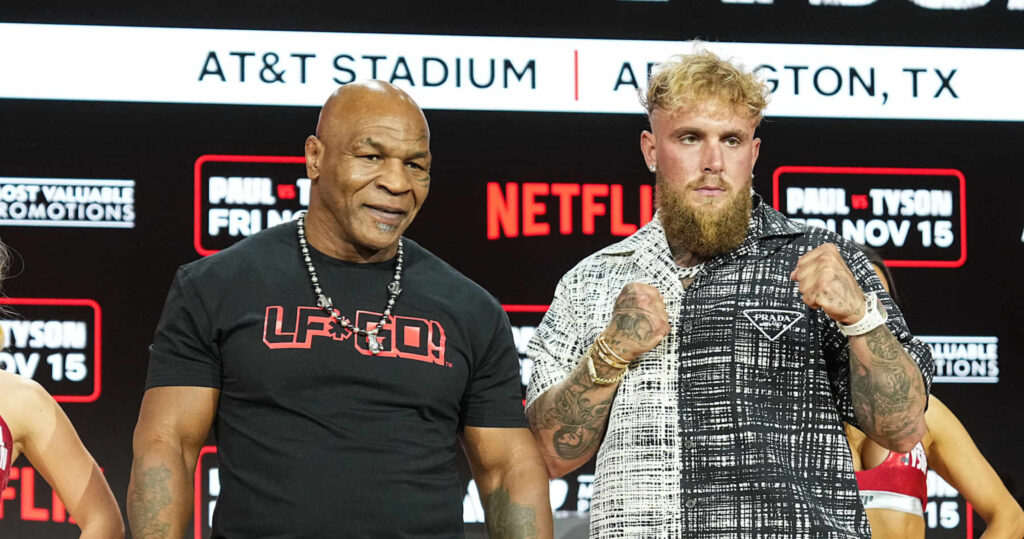
For Tyson, the true support in this fight isn’t just his trainers or team, but the safety measures in place. Each step has been designed to ensure that he walks out of the ring safely. Whether it’s pre-planned moves, whispered cues for breaks, or just a mutual understanding between Tyson and Paul, the orchestrated nature of this fight is as much about protecting Tyson as it is about entertaining the audience.
With all the guardrails in place, fans shouldn’t expect a traditional, no-holds-barred boxing match. Instead, this event is carefully curated to look authentic while prioritizing Tyson’s safety, proving that, sometimes, the best corner men are those who work behind the scenes to protect a fighter from unseen risks. Tyson’s age, experience, and storied legacy all demand a controlled environment, ensuring that while fans get a thrilling show, Tyson isn’t paying a lasting physical price.
In the end, the real winners are everyone involved—Tyson, Paul, the event organizers, and, of course, the fans, who get to witness a performance that celebrates Tyson’s legacy without putting his health on the line.
Now, let me clarify: I’m not saying Countdown: Paul vs. Tyson isn’t worth watching. Far from it! In fact, whether or not my theory about the fight being orchestrated is correct, the show itself is wildly entertaining.
There’s something almost absurdly funny about watching the documentary under the assumption that you, as the viewer, are in on the secret—that this whole spectacle might be more about putting on a show than delivering a genuine fight. It’s like watching The Office: you know it’s staged, but that knowledge only adds to the humor. When you approach Countdown from this angle, it morphs from a straightforward docuseries into a hilarious experience.
Right from the start, the show leans into spectacle, with a scene of Jake Paul arriving by helicopter to meet Tyson. The scene, obviously designed for maximum hype, takes on a whole new level of entertainment when you imagine it as part of a carefully crafted performance. Just picture Paul stepping out of the helicopter, squaring off against Tyson, and facing him with a serious expression. For a moment, it’s as if we’re watching a parody of a high-stakes action movie, where the two meet for a showdown. Under the lens that this is all part of a comedic build-up, the scene becomes as funny as it is dramatic.
The show’s narration by Ice-T only enhances the comedy. Ice-T’s voiceover injects a dose of unintentional humor, giving the documentary a hard-boiled, action-movie vibe that just adds to the absurdity. His narration style, typically suited to gritty crime dramas, feels slightly out of place in a boxing docuseries, making it even funnier when viewed as a parody.
The mix of deadpan delivery and over-the-top commentary fits perfectly into the comedic lens. If you squint hard enough, Countdown: Paul vs. Tyson could easily be the plot of a Ben Stiller comedy—where everything is technically serious, but with a layer of irony that the audience can’t help but laugh at.
Directors Jackie Decker and Tim Mullen are seasoned professionals in sports documentaries. Decker’s work on The Rise of a Champion and Mullen’s on Inside the Ring brought depth and authenticity to these kinds of series. And that’s exactly what makes this show so hilarious.
Because it’s directed by people who usually produce serious, introspective looks into boxing, Countdown: Paul vs. Tyson has that documentary polish and intensity, even when it veers into the realm of the absurd. The seriousness with which the directors approach the content makes every staged moment feel like a comedic setup for those who are in on the joke. It’s an added layer of entertainment when you view it as a carefully constructed performance rather than a genuine showdown.
In another interesting twist, the documentary doesn’t just focus on the lead-up to the Tyson vs. Paul fight—it also delves into Tyson’s background with authentic moments that show his roots. There’s a powerful scene where Tyson visits his old neighborhood, talking about how boxing transformed his life.
These scenes are raw and genuine and provide a fascinating insight into Tyson’s journey from a troubled youth to a boxing legend. Then, as soon as the camera shifts back to Paul, the tone instantly reverts to hype and comedy. This sudden shift from a reflective exploration of Tyson’s life to a scene of Paul “arriving in style” keeps you on your toes and enhances the show’s comedic edge when you view it as a semi-staged event.

While the Tyson-Paul bout might lean into spectacle, the co-main event between Katie Taylor and Amanda Serrano offers a legitimate, high-stakes fight. Taylor and Serrano are elite fighters, and their upcoming rematch promises intense competition. Taylor, known for her technical skill and speed, and Serrano, with her power and versatility, represent the peak of women’s boxing.
Their rivalry, history, and determination make their rematch a focal point for real boxing fans. This fight is a refreshing counterpoint to the Tyson-Paul spectacle, giving the night an authentic aspect amidst the larger-than-life theatrics. Watching Taylor and Serrano brings back the traditional boxing excitement, and the anticipation for their bout adds depth to an otherwise outlandish event.
Countdown: Paul vs. Tyson manages to deliver the best of both worlds—offering a pseudo-reality comedy with all the heightened drama of a classic boxing docuseries. This series is a layered experience, blending genres in a way that is as engaging as it is amusing. On one hand, there’s the orchestrated build-up to Tyson and Paul’s fight, which has all the theatrics and hype of WWE, a scripted, adrenaline-filled performance designed to entertain more than to deliver competitive sport.
The helicopter entrances, the dramatic face-offs, the whispered cues in the ring—it’s all part of a carefully curated act that lets us feel like we’re in on the joke. Every punch and every dramatic line is played up, creating a show that’s more about selling the idea of a fight than an actual battle, and that’s precisely where the comedy lies.
But what makes Countdown especially interesting is the contrast between this theatrical spectacle and the very real competition between Katie Taylor and Amanda Serrano. Taylor and Serrano’s bout offers a pure, unscripted side of boxing that’s refreshing against the backdrop of Tyson and Paul’s orchestrated match. Taylor and Serrano aren’t here to perform in a comedy—they’re here to fight for titles, legacies, and the future of women’s boxing. Their presence in the series adds a level of depth and authenticity, drawing in viewers who want more than just a show.
The Effect is a dynamic, multifaceted series that feels like a blend of WWE, a Ben Stiller comedy, and an authentic sports documentary all rolled into one. The WWE aspect comes through in the larger-than-life performances, as Tyson and Paul each play their roles to build anticipation.
There’s an unmistakable theatricality, with each moment crafted to amplify excitement and draw the viewer into the spectacle. Meanwhile, Ice-T’s narration and the high production quality add to the “movie” feel, reinforcing the idea that this is as much entertainment as it is sport. In a way, it’s a nod to boxing’s history of spectacle-driven matches—only this time, we’re let in on the act.
The Ben Stiller comedy effect emerges when you view the series as a self-aware comedy, with each serious line, every over-the-top entrance, and each training scene morphing into moments of humor. Watching Tyson and Paul deliver intense monologues and execute dramatic stares under the assumption that it’s all for show creates an experience that’s as funny as it is entertaining. It’s as if the entire series is winking at us, inviting us to enjoy the absurdity.
And then, of course, there’s the genuine sports documentary layer—courtesy of Taylor and Serrano—who bring a level of realness and authenticity. Their storyline is driven by raw athleticism, genuine rivalry, and a history of fierce competition. These two boxers embody what fans of the sport love about boxing: the skill, the heart, the dedication, and the drama that unfolds naturally in the ring.
As viewers switch between scenes of Tyson’s theatrical pre-fight antics and the focused, disciplined training of Taylor and Serrano, the series takes on a fascinating duality. It’s both a parody and a homage to boxing, spotlighting the sport’s entertainment value without losing sight of its core elements.
Together, these elements create a viewing experience that offers something for everyone—a laugh, a sense of thrill, a touch of nostalgia, and a look at the real art of boxing. Countdown: Paul vs. Tyson doesn’t simply capture a fight; it captures the changing landscape of boxing, where sports entertainment meets serious competition.
It’s a layered production that mirrors the ways in which modern audiences consume boxing, with an appreciation for both its spectacle and its authenticity. In that sense, this series goes beyond just setting up a match. It invites us to see boxing as it is now—a mix of real competition, star-driven performances, and a touch of irony that entertains those who are in on the joke.
All in all, Countdown: Paul vs. Tyson promises to be a wildly entertaining spectacle, no matter how “real” the fight ends up being. It’s a unique blend of comedy, drama, and athletic skill, and the best part? It’s all accessible with a simple Netflix subscription. Whether Tyson and Paul deliver a legitimate contest or pull off a carefully choreographed performance, this show has already proven it can be entertaining on multiple levels.
I’ll be tuning in for the laughs—the exaggerated entrances, the scripted-seeming trash talk, the helicopter scenes that feel more like a Hollywood action movie than a boxing docuseries. I’ll also be watching for the true sports drama with Katie Taylor and Amanda Serrano, whose rematch is filled with real stakes, passion, and skill. The contrast between the theatrics of Tyson and Paul and the intense rivalry of Taylor and Serrano only makes the whole event more interesting.
For those willing to see this event as a mix of comedy and sport, it’s bound to be entertaining, if not outright hilarious. If you’re in on the secret, the series becomes even more fun to watch, allowing you to appreciate the production’s ironic tone and laugh along with the orchestrated drama. Whether you’re here for the comedy, the hype, or the genuine sportsmanship, Countdown: Paul vs. Tyson has something to offer. I’ll be watching, and if you’re in on the joke, I think you’ll find it just as entertaining as I do.
Click here to see my latest posts!